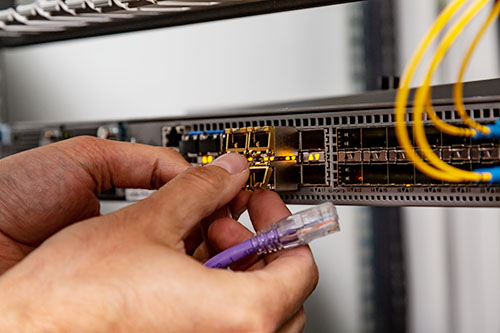PRODUCTS

- 2 Modules of the 10G SFP+ TransceiversSFP+ 10G has different modules depending on the use. For example, if you consider it for use in the Local area network, it will be the copper transceiver; you should consider it. For longer transmissions, you would need fiber optics.We will discuss both modules in detail and understand multiple types of modules to explore Optical transceivers.10GBASE-T SFP+ Co898

- QSFP-DD OverviewQSFP-DD, or Quad Small Form-factor Pluggable Double Density, is a next-generation transceiver form factor that increases bandwidth capacity and meets the needs of data centers and high-performance computing environments. The device operates at 400 Gbps standard, which is achieved by doubling the electrical and optical interfaces of its predecessor – QSFP28, while maintaining compat896

- Network Requirements:For a studio or office network setup with around 10-15 computers, the goal is to have fast internal LAN data sharing, with read/write speeds reaching 200MB/s or more. Here is a solution to achieve this:Analysis:Based on the above requirements, a Gigabit connection (with a theoretical maximum of 125MB/s and a practical speed of 110MB-120MB/s) falls short. By setting up a file s800

- Walsun's 10G SFP+ optical modules are designed for 10 Gbps data transmission, catering to diverse network needs. These modules support various transmission distances and feature hot-swappable and digital diagnostic monitoring capabilities, ensuring compatibility with over 200 brands and providing customers with flexible options. Additionally, these 10G SFP+ optical modules come in various form938

- What is 10G SFP+?You may have heard of different terminologies, such as 10Gbase—T, 10G SFP, and 10G SFP+. These are all 10 gigabit Ethernet systems, but they have different functionalities and ensure various network performances.Before exploring the 10G SFP+, we must know what 10G SFP is and how it differs from the 10G SFP+.What is SFP?SFP refers to the small form pluggable factor. In actuality, i799


 CHS
CHS Walsun Mall
Walsun Mall










